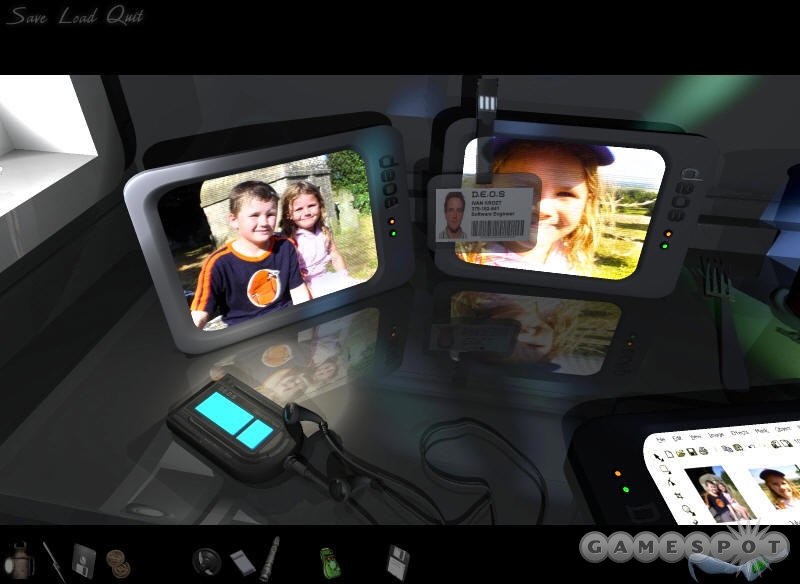If you played last year's Dark Fall: The Journal, then you've virtually played its follow-up, Dark Fall: Lights Out. Both games were designed and programmed by the same man, Jonathan Boakes; both have a very similar feel; and both share almost identical weaknesses and strengths. Like the first Dark Fall, Lights Out suffers from a static slideshow presentation, dull and cryptic storytelling, almost no interaction with other characters, only a few main locations to explore, weak audio, and technical problems. On the bright side, Lights Out again displays Boakes' obvious love for British landscapes and lore and his penchant for meticulously detailed game environments. Lights Out takes no major steps forward, but it still has some good things to offer.

In Lights Out, you play as a cartographer in 1912 England. You're commissioned, under mysterious circumstances, to do mapping in a Cornish seaside town noted for its ill-fated lighthouse. Upon arriving at the tiny village, you meet up with the suspicious doctor responsible for your visit. Unfortunately, this meeting is only described in the text of your character's journal. As in the original Dark Fall, Lights Out relies way too heavily on journal entries, book excerpts, and other text to tell its overly cryptic story. Such a static, tedious storytelling device does nothing to take advantage of the computer-game medium, which thrives on interactivity and cinematic sweep.
Later, you do meet the doctor face to face for a moment. Actually, you only see part of his face, and you barely get to interact with him at all. The game's only other encounter with a living person is equally brief and, frankly, silly. You just view a woman's eye through a keyhole, and you have to knock on the door in code to answer a couple of yes/no questions from her.
Despite such major storytelling flaws, Lights Out still features an interesting setting that should appeal to fans of old-fashioned ghost stories. Your job is to solve unexplained events in and around the old lighthouse, including the disappearance and supposed murder of its staff. As you investigate the mystery, you're mostly restricted to searching the lighthouse and its immediate environs. Fortunately, the story has you traveling back and forth through time to visit the same area in widely different eras, from the prehistoric past to the future. Seeing the same locale change across the centuries proves to be one of the more interesting features of Lights Out.
Unfortunately, the story and setting are never more than interesting--and then only intermittently. The game is supposed to be a ghostly mystery, but it's not even remotely frightening. A few incomprehensible voice-overs, low-budget sound effects, and sparse music just don't create chills and thrills--nor does seeing an occasional blurry green aura around objects, courtesy of a "ghost hunter's" high-tech goggles. There's just no emotional pull to this game.
Even if Lights Out doesn't grab you emotionally, it can at least test you intellectually. The puzzles will challenge your observation skills, requiring you to carefully examine every inch of the game's environments for clues. (In fact, it can be too easy to overlook a few vital items.) Outside of a few straightforward inventory puzzles, you'll most often need to make sense of various codes used to unlock doors or to operate machines. While the puzzles are few in number and not particularly diverse, they're at least challenging without being frustrating.
While Lights Out doesn't have too much going for it as far as story and gameplay, it does sport some engaging visuals. The game relies on a woefully dated slideshow-style presentation and the graphics are limited to a resolution of 800x600, though that's actually a step up from the original Dark Fall. On top of that, the graphics still suffer from a major technical glitch that marred the first game. When you boot up Lights Out, it lowers your monitor's refresh rate to headache-inducing levels and fails to reset it when you exit the game.

Despite those drawbacks, the visuals often boast meticulous detail. As you rummage through futuristic crew quarters or a present-day tourist gift shop, you'll discover a wealth of detail that makes each place feel real and lived in. You can spend many minutes poring over some of the scenes, noting convincingly antique maps or log books during the game's 1912 segment, animal hides drying in the sun in the game's prehistoric setting, and a sleek mp3 player in the game's futuristic version of the lighthouse.
While the visuals can certainly be pleasant, Dark Fall: Lights Out is ultimately unambitious and relies on very dated and dry presentation methods. It's also very short; you can finish it in a day. Overall, it feels strikingly like its predecessor, though with a bit more visual polish and a tad more diversity, thanks to the ability to visit the same locale across the years. All told, Lights Out is a decent but unremarkable little adventure.